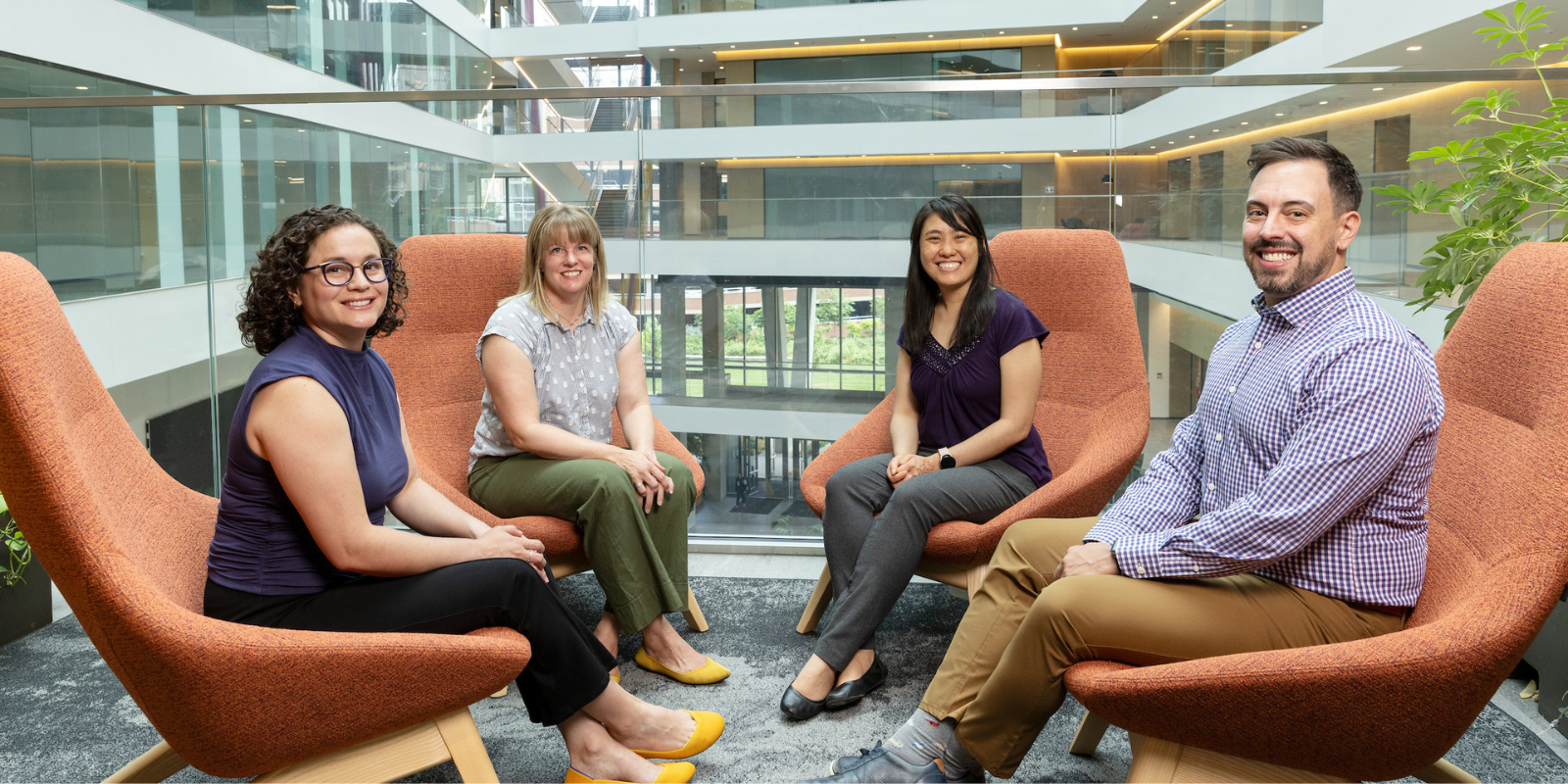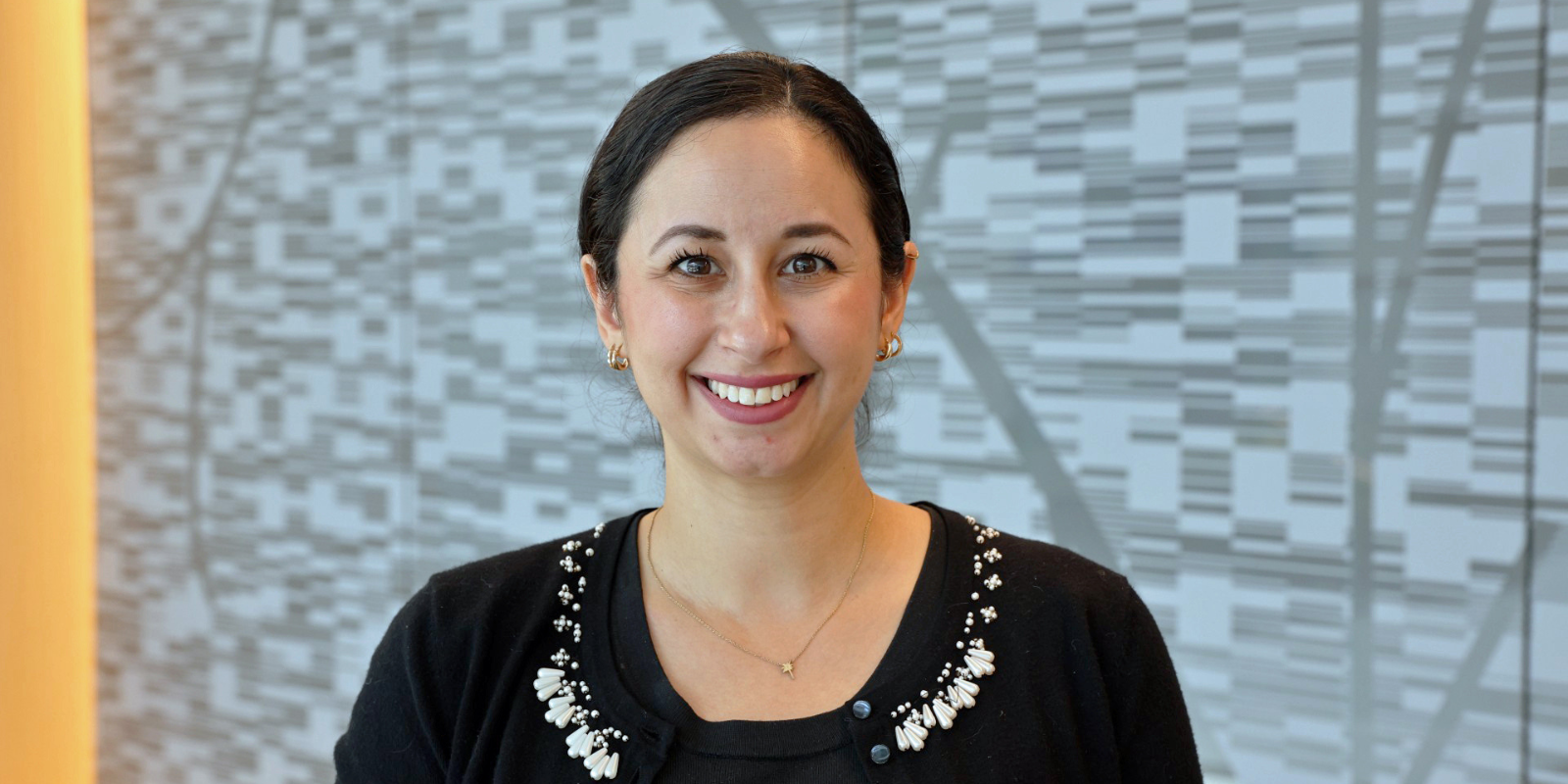A University of Colorado Department of Medicine team of physicians cross-trained in internal medicine and pediatrics is helping to bridge the care gap between the children’s and adult hospitals on the University of Colorado Anschutz Medical Campus. And that team has just expanded its offerings in a way that’s rare nationwide.
Behind the initiative by the department’s Combined Internal Medicine and Pediatrics program –known as Med-Peds – is the fact that, depending on their medical needs, patients over age 18 frequently are admitted to Children’s Hospital Colorado, including some with intellectual and developmental disabilities. Meanwhile, patients under age 18 are often admitted to UCHealth University of Colorado Hospital (UCH), as are many young-adult patients with complex chronic conditions that begin in childhood, such as sickle cell disease.
It's in such situations that CU Med-Peds is stepping in. In January 2023, Med-Peds-trained physicians launched a consult service at the side-by-side hospitals. And on July 2, they began a parallel primary-care service at UCH for adult patients with chronic childhood-onset conditions.
Aaron Manning, MD, associate program director at CU Med-Peds, heads up the new endeavor. He did his Med-Peds residency at CU Anschutz and now is an assistant professor at CU Med-Peds. He also works as a hospitalist at both Children’s Colorado and UCH. He has published research on improving care of adult patients at pediatric hospitals.
→ CU School of Medicine Teams Take On Challenges of Pediatric-to-Adult Transition of Care
Manning says that the adults admitted at Children’s Colorado may develop medical problems that are infrequently encountered among pediatric patients, so pediatric-trained providers may feel less comfortable caring for them. Likewise, he says, adult-trained providers at UCH often feel less comfortable caring for younger patients or those with chronic childhood conditions.
“We’re seeing young adults with these childhood-onset illnesses that previously may have had life expectancies in the teens but are now living well into their 30s and 40s,” thanks to improved therapies, he says. “They’re often a challenging patient population to care for, because if they stay at Children’s and are continued to be cared for by a pediatrician, they may ultimately start to develop adult comorbidities, like hypertension or heart failure, that pediatricians aren’t well versed in. And, conversely, when they transition over to the adult side, they may have a genetic disorder that most providers trained in internal medicine have never cared for before. And so, these patients can get stuck in No Man’s Land.”
He adds: “As Med-Peds providers, we can step into that role. Not only have I probably heard of the genetic syndrome that they have, and cared for patients like that before, but also, I'm well versed in heart failure and type 2 diabetes and hypertension, since I do that as the other half of my career. It’s a cool role that we get to play.”
Increasing the comfort level
Recently, Manning spoke with a young man with Duchenne’s muscular dystrophy, one of the most severe forms of inherited neuromuscular disease. “He and his family were telling me they were seen at another adult hospital, and the first three providers they saw said, ‘We’ve never cared for anyone with Duchenne muscular dystrophy before.’ Until recently, the life expectancy was somewhere in the 15 to 20 year range, but now patients with Duchenne’s are living significantly longer.”
He adds: “That emphasizes the importance of this project we’re pursuing. If this young man is hospitalized at UCH and ends up on my team, we can say, ‘Yes, we’ve cared for many, many patients with Duchenne’s muscular dystrophy.’ That way we can increase the comfort level of patients and families as they’re navigating the transition to adult care.”
→ Medicine and Education are Both in the Career Mix for a CU Med-Peds Match
The physicians involved in the new program have all completed four-year Med-Peds residencies at the CU Department of Medicine or elsewhere. After a four-year residency, in which physicians alternate between internal medicine and pediatrics rotations, they are eligible to complete board certification exams in both internal medicine and pediatrics. Some also go on to be trained in a sub-specialty.
Manning says the fact that the CU Anschutz campus boasts side-by-side pediatric and adult hospitals is a district advantage for his program, making it easy for both physicians and patients to move back and forth.
Same day consults at 2 hospitals
The idea for the program arose about two years ago, Manning says, “when there were a couple of adolescent patients who needed assistance from hospital medicine and some of our sub-specialty services at UCH, and it became clear that our sub-specialists and hospitalists at UCH felt uncomfortable weighing in and providing consultative input for these young adolescent patients.”
So Marisha Burden, MD, division head of Hospital Medicine, and Jenny Reese, MD, section head of Pediatric Hospital Medicine, “worked together to troubleshoot the problem,” Manning says. “And we thought, why don’t we put together a Med-Peds consult service to provide consultative input at both hospitals on the same day?”
He adds: “I was on the consult service one week recently and saw four or five patients admitted to Children’s who were in their 20s, and one 33-year-old. I’ve seen 50-year-olds over there before who were still getting their care at Children’s for various reasons.”
In some cases, he says, adult patients may have intellectual or developmental disabilities and are unable to manage their care independently in an adult-care setting. In other cases, the Med-Peds team helps guide patients and families on making the sometimes-stressful transition from the pediatric hospital to the adult side when the time is right.
Adding a primary service
Since the consult service began, Manning says, “we’ve come to realize that a lot of these patients at UCH would benefit from even more intensive medical support than we can provide with the consult service. And that led to this idea of creating our Med-Peds primary service. Meanwhile, over the last couple of years, we’ve hired more Med-Peds trained hospitalists. So, as of July 2, eight of us work as a hospital medicine team at UCH.”
The new primary team starts out with up to about 14 patients admitted to UCH. The initial goal, Manning says, “is to cohort patients to our team who we feel would benefit from pediatric expertise at an adult hospital. This includes any adolescent admitted to hospital medicine, young-adult patients with intellectual and developmental disabilities, and young adults with chronic conditions of childhood or childhood-onset diseases – patients with sickle cell disease, genetic disorders such as Down syndrome, cerebral palsy, or metabolic disorders.”
Manning says the combination of a Med-Peds primary service paired with a consult service is fairly rare nationwide. “There are a few similar programs out there, but this is the first time we’ve done this here.”
Manning’s team is now developing ways to evaluate the new program’s results, including gathering feedback from patients as well as hospital leaders, nursing and other ancillary services, and others.
He and his colleagues are “super excited” about the program, he says.
“This is a vulnerable patient population. Having conversations with patients and their families over the last year and a half has emphasized how hard it can be when they take that step into the adult world. The opportunity to improve their care means a lot.”
Photo at top: UCHealth University of Colorado Hospital (left rear) and Children's Hospital Colorado (center foreground) share the CU Anschutz Medical Campus.



